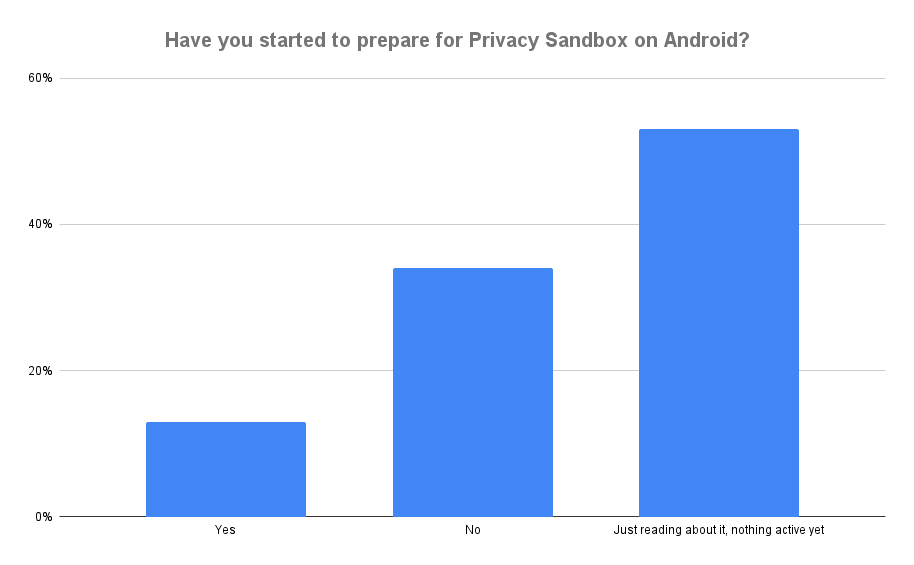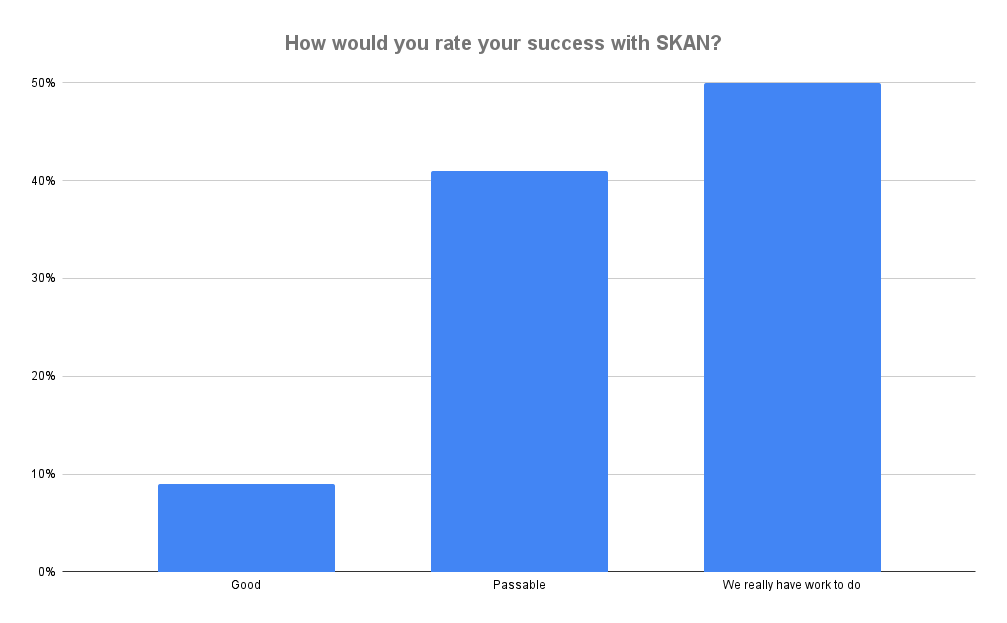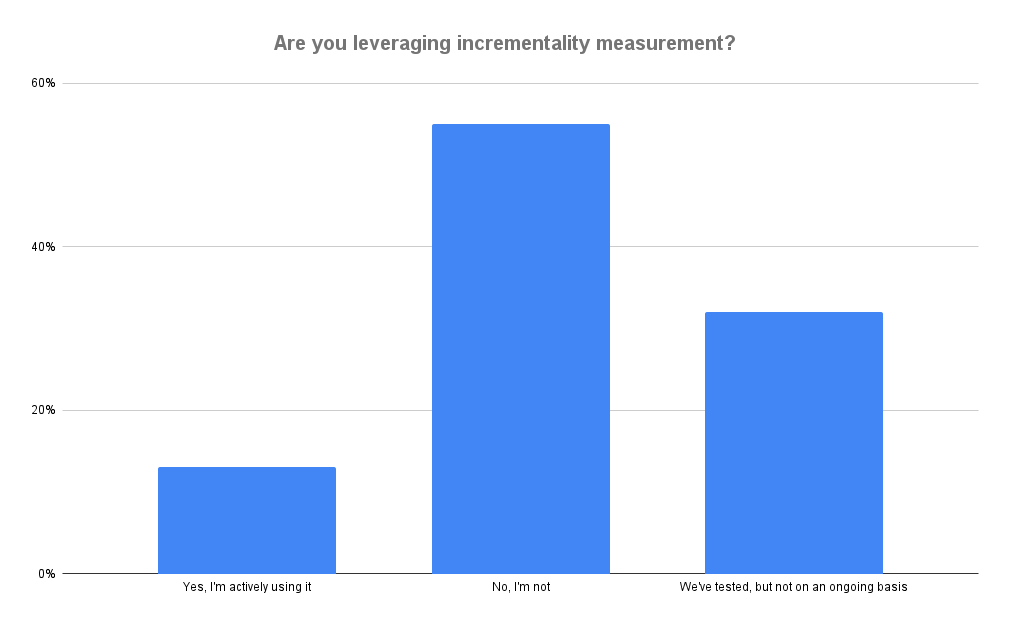12 insights on the future of marketing measurement from Lyft, Rocketship HQ, Liftoff, and Singular
What is the future of user acquisition measurement?
There are so many things we take on faith in life. When we step out of bed in the morning, we take it for granted that our feet won’t sink through the floor. When we hit the gas on green, we have some level of trust that another car won’t sideswipe us. When we train for a job, we believe that we’ll develop the skills and knowledge needed to perform our roles.
But not really in mobile marketing. Not really in user acquisition. Not anymore.
Over the past few years, that bedrock faith in the nature of reality and how things work in the mobile growth space has been shaken multiple times. Buckle up, because the next few years with SKAN 4.0 and Privacy Sandbox on Android promises to continue the rapid pace of change.
So what does our future hold?
We recently took some time to figure that out with some mobile all-stars in a webinar on the future of user acquisition. (Check it out here.) Our all-stars included:
- Sherry Y. Lin, Group Manager, Marketing Technology for Lyft
- Cody Christie, Director of User Acquisition & Marketing Technologies for Riot (who unfortunately had to cancel as he fell ill)
- Shamanth Rao, Founder & CEO, Rocketship HQ
- Nick Blake, VP, EMEA, Liftoff
- Gadi Eliashiv, CEO and Co-Founder, Singular
Here are some of the top insights from that panel.
1. 87% of mobile marketers are not digging into Privacy Sandbox just yet
Everyone has a lot to think about and work on. What we saw in the first months of SKAdNetwork on iOS is that many marketers avoided implementing SKAN as they ran ad campaigns based on fingerprinting or old marketing intelligence. But early adopters who got it right — like Rovio — reaped the lion’s share of rewards.
Even today, only 13% of marketers are actively checking out Privacy Sandbox. I get it: it’s in the far-off future. But so was SKAN at one point.

The insight here is simple:
Many marketers can’t or won’t make the effort to adopt new technologies, even ones mandated by major platform owners. Be one of those who does go early, and you’ll be better adapted to changing conditions.
2. Targeting is a very significant difference between Apple’s SKAN and Google’s Privacy Sandbox for Android
Most marketers have been pleasantly surprised by Google’s Privacy Sandbox for Android. Most have also been happy about the announced changes to SKAN 4.0, while wanting more.
But there’s a massive and foundational difference between them: targeting.
“[Google’s] solutions address both attribution and targeting, whereas SKAN only addresses attribution,” Lyft’s Sherry Lin said on the webinar.
Clearly, we can have a debate about Topics API in Privacy Sandbox for Android, how good it is, how fine-tuned or not it is … but the fact remains that there’s a privacy-safe interest-based behaviorally-acquired targeting mechanism in PSA and there’s no equivalent functionality in SKAdNetwork today or the SKAN 4.0 specification for tomorrow.
(Plus, there’s even retargeting functionality built into Android Privacy Sandbox via Fledge.)
As things stand, therefore, Android marketing will have a leg up on iOS until Apple does something similar (if it will).
3. SKAN 4.0 is not a complete rewrite
It’s been hard enough for marketers to re-instrument for ATT and SKAN over the past year. The good news is that SKAN 4 is not only better, with more detail and more insight, it’s also an evolution not a revolution.
“Advertisers are not gonna have to blow everything up and start again … and we’ll get deeper insights than we currently have with SKAN,” says Liftoff’s Nick Blake. “So it’s a step in the right direction.”
There are always wrinkles, however, and while Apple will likely update devices at a pretty significant rate as per usual, there is now an ecosystem component to SKAN capabilities and functionalities, and partners will also need to upgrade their own tech stacks to support the latest versions.
Until that happens, expect some speed bumps.
4. Privacy doesn’t have to suck (from a marketing perspective)
SKAN has been a long tough road.
As of today, just 9% of mobile marketers that we surveyed during a recent webinar said their success with SKAN could be rated as “good.” 46% said it was passable — not exactly the kind of grade you want to bring back to your boss during bonus season — and 50% said “we really have work to do.”
Which, of course, is code for: it sucks.

But Google has shown that privacy isn’t necessarily doom and gloom for digital marketing. There is a way to make performance marketing work in a privacy-safe manner.
“My first reaction was like, ‘Wow, this doesn’t suck. It’s actually not that bad,’” says Singular CEO Gadi Eliashiv.
Of course, Google had a second-mover advantage, and we’re seeing the results already in SKAN 4.0, which addresses some of the points where Privacy Sandbox is better. But the good news is that PSA doesn’t suck, and SKAN is looking like it will suck less.
5. Multiple postbacks will be a wonderful thing
GAID and IDFA enabled extremely long-lived cohorts that gave marketers immense amounts of data about users, campaigns, ad partners, and more. That’s gone for good, essentially.
But Privacy Sandbox enables multiple postbacks, and SKAN 4.0 will as well. And that’s huge for marketers to be able to understand, in a privacy-safe way, the value of their advertising dollars.
6. Platform privilege will still be a concern
Apple requires third-party advertisers to use SKAN, but uses its own internal attribution methodology for Apple Search Ads and gives campaigns there access to more data, thanks to first-party privilege. That’s controversial, of course, but old news by now.
The question today is whether Google, as the author of the Privacy Sandbox on Android spec, will privilege itself in any way.
“I’m fairly certain that Google is going to privilege its own inventory, its own network,” says Shamanth Rao of Rocketship HQ.
I haven’t seen it yet in the spec, but you almost have to assume that a platform is going to build something that works best with its tools and processes, no? So this is something to keep an eye on.
7. Timing matters
I said above that getting a headstart on competitors is important. Learning how to optimize growth strategies faster than them is a competitive advantage.
But what’s the right timing?
Going too early might be wasteful of resources, especially given the fact that specifications are guaranteed to change over time.
“When is the right time?” says Lyft’s Sherry Lin. “When is a product mature enough for us to go in there and test? If it’s too early, the product is not ready … [the key is] really knowing when is the right time to test and also making sure that we line up the right engineering and data science resources to do the evaluation justice.”
And that, of course, is a judgment call. Perhaps the best solution is to align yourself with the right partners who are investing massive resources to get it right … and lean on their expertise.
8. Retargeting will still be a challenge
While there’s a built-in mechanism on Android for retargeting in FLEDGE, there’s currently no line of sight to similar functionality on iOS.And while some in the gaming community — like Rovio in our most recent webinar — haven’t found retargeting fruitful, others like Lyft do.
“Half of our audience can’t be retargeted because per ATT, we can’t be sharing any of these identifiers, not even server-side ones like email addresses and phone numbers unless we get user consent,” says Sherry Lin. “So our retargeting program has taken a really big hit.”
There’s other privacy-safe options — Lyft is looking at Dstillery and seller-defined audiences — but it’s not quite like the old days of IDFA.
9. Incrementality will have a seat at the table
It may not be as fast as you like or as precise as you could wish for, but incrementality will be a part of the overall solution that marketers need, especially marketers with a well-known brand.
But there are limitations, and they’re not likely to go away soon:
“Incrementality is super useful, super important, especially for advertisers, again, that have high mindshare,” Lin says. “On its own, though, it’s not super helpful for performance marketers because the data comes in slowly.”
It’s slower, it’s expensive, and there are multiple non-obvious ways to mess it up, but done well, there’s value. Which is probably why only 13% of mobile marketers that we surveyed are actually using it:

The majority, 55% are not, and 32% are dipping their toes in the incrementality waters. That last number is likely to rise in the coming years.
10. Media Mix Modeling is really hard in chaotic times
Media Mix Modeling has some potential as well, and has been used for decades by big brands. But it relies on some level of stability in the world.
And that’s been hard to come by recently.
“No. I don’t think that would be applicable,” Rao said when asked if MMM would be useful during Covid. “Because again, I think there has to be some precedent.”
That’s tough news, because the turbulence of Covid times hasn’t really settled down at all, with economic and political chaos globally at the moment.
Still, there’s some potential here. And it might even hit a Singular product at some point:
“It’s not gonna replace your signal from SKAN or GAID, or Privacy Sandbox, but it’s something else that you use to inform decisions,” says Singular CEO Gadi Eliashiv. “And it’s actually something I foresee also becoming more prevalent in platforms like Singular and other platforms.”
11. MMPs are shock absorbers
We’ve had a ton of change over the last year. That’s only going to continue over the next few, as Apple iterates SKAN and Google implements and releases Privacy Sandbox on both web and mobile.
“Embrace the change and don’t get too comfortable,” says Liftoff’s Nick Blake.
That’s good advice, but it’s not easy to follow when your livelihood depends on managing and improving growth rates. You have to fly the plane, after all, while also fixing it.
Good news?
There is a pillow for this space between a rock and a hard place, however.
“I kind of see us as … the shocks on the car,” says Singular’s Gadi Eliashiv. “So the road is really bumpy. And, you know, I don’t want to say the MMPs are the springs, but you kind of wanna make the road ahead for the marketers a bit more stable, right? And so our job is to make that simple, to simplify, to absorb all the changes in the tabulations, and make it a bit more simple.”
12. Fuzziness is your friend
Whether accurate or not as a measure of marketing impact, last-click measurement based on IDFA and GAID was hard data. That’s going away.
“Embrace fuzziness,” says Rao.
There are going to be many more sources of marketing data that you’ll need to take into account in the future, including:
- IDFA where available
- GAID until gone
- SKAN
- Privacy Sandbox
- Cost & campaign data
- In-app analytics and insight
- Store data (App Store, Google Play)
- And much more (see here for a more comprehensive list)
Melding that all together into actionable insight will be critical, but you’re not going to get 100% certainty on very much. Which means you’ll have to embrace fuzziness.
Watch the entire webinar yourself
You’ve read some of the highlights, but there’s much more insights in this packed webinar. It’s still available on-demand, so you can enjoy it at your leisure.
Simply register here to access the full video.
And if you’re looking for a new set of shocks for your mobile marketing, book some time with a Singular expert. We’d be happy to listen, learn, understand, and suggest.
Stay up to date on the latest happenings in digital marketing


